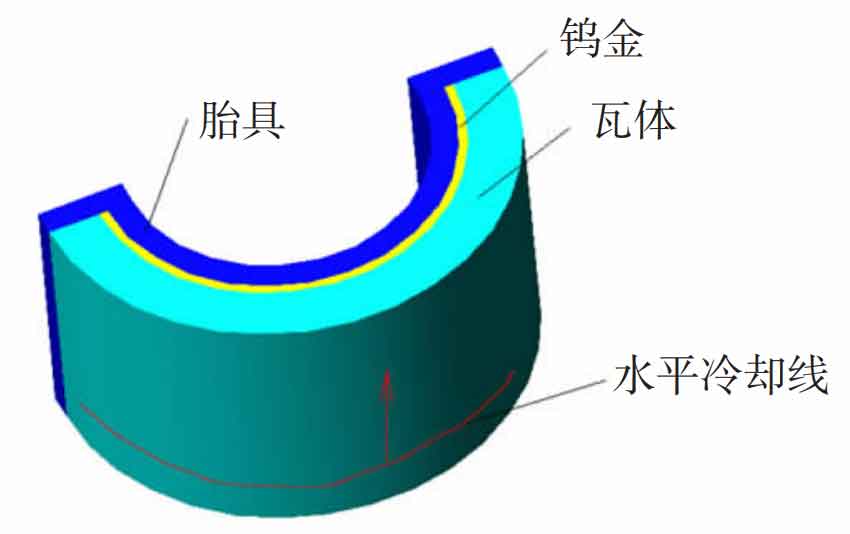At present, bearings at home and abroad adopt the structure that the joint surface of bearing bush body and bearing Babbitt alloy is smooth without dovetail groove. In the initial production stage of bearing bush, after ultrasonic (UT) flaw detection, the bearing bush is seriously shelled, and the repair and re hanging rate is very high. The shelling of smooth bearing bush is mainly near the end, which is semicircular, as shown in Figure 1.
Through analysis and practical test, it is considered that the main reason for the shelling of bearing bush on the joint surface is due to the uneven shrinkage stress during cooling.
1. Cooling mode of Babbitt gravity casting process
During the gravity casting of bearing bush, the molten Babbitt alloy liquid is injected between the tinned bearing bush matrix and the mould, and then water cooling is started. Cooling while pouring. The direction of water cooling is shown in Figure 2. Babbitt liquid solidifies gradually upward from the bottom circumference, and finally stops water cooling to complete pouring.
2. Cooling mode and shelling of Babbitt gravity casting
The analysis shows that there are two main reasons for the shelling of Babbitt gravity casting bearing: one is the stress formed in the solidification process of Babbitt bearing; The other is the stress produced by the shrinkage process of bearing Babbitt alloy. In the solidification process of bearing Babbitt alloy, there are three areas: liquid phase area, solidification area and solid phase area, as shown in Fig. 3. During cooling, it starts from the solid phase area close to the matrix to solidify sequentially in the direction of the mould, resulting in large stress in the circumferential direction. On the other hand, the bearing Babbitt liquid gradually solidifies until it drops to room temperature. In this process, the Babbitt alloy and the tile body are cooled at the same time.
Due to their different materials and linear shrinkage, the shrinkage and stress are also different. The shrinkage of the bearing Babbitt alloy is greater than that of the matrix, Therefore, there is a great stress at the junction of matrix and Babbitt layer. Especially for the bearing bush with large diameter and smooth joint surface, the greater the stress, which greatly reduces the bonding strength between Babbitt alloy and matrix, resulting in half moon shaped tire loss at the joint of bearing bush (as shown in Figure 1).



